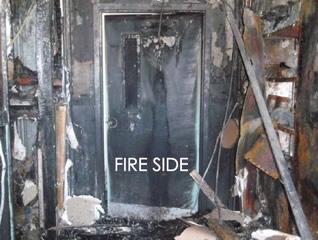Moving Past the Apathy about Fire Door Inspection

 We have sprinklers and alarms, are fire doors really all that important?
We have sprinklers and alarms, are fire doors really all that important?
“Here’s the reality”, they begin, “There just isn’t enough money or time, and let’s face it, enforcement, to make door inspections part of the priority.” Or so the story goes. Talk to building managers, business owners or school superintendents and you will hear the same arguments over and over.
They continue, “The code is vague and open to interpretation. Doors that pass inspection today are non-compliant again tomorrow. The failure rate is too high. Inspections create legal paper work that makes me liable. No one is enforcing the code.” Or my personal favorite, “fire door inspection is a scam”.
Here’s the actual reality. Active and passive systems are meant to work together during a fire, not one in place of the other. Together they control fires and save lives. The code isn’t all that vague when interpreted by competent life safety professionals with the intention of proactively saving lives. The failure rate is high in most facilities. And this should be a very loud call to action. Inspections do create a paper trail that could lead to liability if you do nothing to maintain your doors, but death due to negligence is a larger problem.

The building code is a living document. It grows and matures based on real life experience. Real life experience like the one of Edward Pikinski, age eleven and pictured here. He is one of the 90 pupils who died in the Our Lady of Angels School Fire in 1958.
The primary cause of loss of life was the inadequacy of the exits, coupled with the use of substandard doors that were propped open at the time of the fire. The building code still enforces the invaluable lessons learned from Edward’s unnecessary death and the deaths of far too many other people. The lesson is clear: APATHY KILLS!
– Stephanie Smith | AEGIS Office Manager

